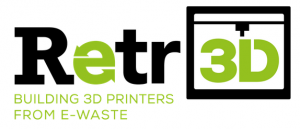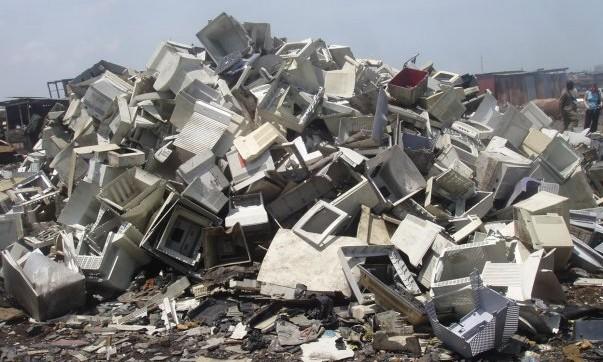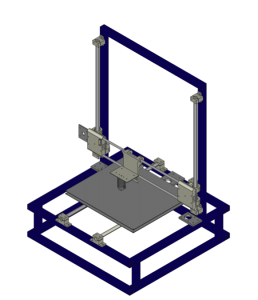 While we call it e-waste, the 2.3 million tons of computers, cell phones, consumer electronics and televisions that we throw away every year is not trash. In fact, each electronic device that we throw away because it is damaged or out-dated is full of both dangerous, toxic materials as well as valuable materials that can and should be recycled and reused. Americans alone, dispose of cell phones containing over $60 million in gold and silver every year, as well as valuable materials like copper and palladium. When one million laptops and other computer devices are recycled and used in new products it saves enough electricity to power 3,657 typical homes in a single year. E-waste isn’t trash, it is a literal waste of valuable resources.
While we call it e-waste, the 2.3 million tons of computers, cell phones, consumer electronics and televisions that we throw away every year is not trash. In fact, each electronic device that we throw away because it is damaged or out-dated is full of both dangerous, toxic materials as well as valuable materials that can and should be recycled and reused. Americans alone, dispose of cell phones containing over $60 million in gold and silver every year, as well as valuable materials like copper and palladium. When one million laptops and other computer devices are recycled and used in new products it saves enough electricity to power 3,657 typical homes in a single year. E-waste isn’t trash, it is a literal waste of valuable resources.
It says a lot about the relative wealth in America when we can afford to throw away millions of dollars worth of precious metals because it is easier to toss a phone away than drop it off at a recycling center. In an incredibly short matter of years, cell phones have transformed the continent of Africa and the way that they communicate with each other. Rural communities, once isolated, have become global citizens, and the stabilizing effects in a region traditionally kept in perpetual strife thanks to greedy western corporations and meddling nations are palpable.
Techfortrade, and their technical director Matthew Rogge, believe that the same transformative effects can be achieved by bringing low cost, 3D printing technology to poor and developing communities. By introducing 3D printing to these communities, it opens up the possibility of attainable and low cost localized manufacturing. To that end they have developed Retr3d, a program that can help transform thousands of tons of e-waste, destined to be sent to a landfill, into cheap 3D printing equipment. Not only can this recycled technology be built and maintained at a local level, but by using locally sourced material first it prevents these new economies from wasting precious materials from their own backyards. Precious materials that very well could be the line between success and failure.
 The Retr3d program will generate 3D printer designs based entirely on the existing inventory of materials that users have access to, culled from mismatched parts gathered from available e-waste. The raw materials at hand and their dimensions simply need to be input into Retr3d and the program will then automatically generate functional 3D printers using a series of Python scripts. All of the design scripts can be run for free in FreeCAD, and as soon as a complete 3D printer design is created, Retr3d will automatically create a folder containing all of the required STL and design files. Additionally, both Plater and Slic3r are fully integrated into Retr3d and will arrange and slice STL files automatically.
The Retr3d program will generate 3D printer designs based entirely on the existing inventory of materials that users have access to, culled from mismatched parts gathered from available e-waste. The raw materials at hand and their dimensions simply need to be input into Retr3d and the program will then automatically generate functional 3D printers using a series of Python scripts. All of the design scripts can be run for free in FreeCAD, and as soon as a complete 3D printer design is created, Retr3d will automatically create a folder containing all of the required STL and design files. Additionally, both Plater and Slic3r are fully integrated into Retr3d and will arrange and slice STL files automatically.
Projects like Retr3d are the reason that open source software and hardware movements are so important. Maintaining products that are as open sourced as possible have proven, time and time again, that open sharing makes technology accessible to more people and encourages innovation all across the board. The ability to transform readily available e-waste into functional technology that can create jobs and security, as well as spur industrial growth in developing economies, will bring all of us closer to a more equitable and fair world community.
You can find out more about the non-profit Techfortrade on their website, and you can download Retr3d and read more about how it works over on Wevolver. Let us know what you think of this exciting program over on our Turning E-Waste into 3D Printers with Retr3d forum at 3DPB.com.
Subscribe to Our Email Newsletter
Stay up-to-date on all the latest news from the 3D printing industry and receive information and offers from third party vendors.
You May Also Like
Gorilla Sports GE’s First 3D Printed Titanium Cast
How do you help a gorilla with a broken arm? Sounds like the start of a bad joke a zookeeper might tell, but it’s an actual dilemma recently faced by...
Nylon 3D Printed Parts Made More Functional with Coatings & Colors
Parts 3D printed from polyamide (PA, Nylon) 12 using powder bed fusion (PBF) are a mainstay in the additive manufacturing (AM) industry. While post-finishing processes have improved the porosity of...
$25M to Back Sintavia’s Largest Expansion of Metal 3D Printing Capacity Since 2019
Sintavia, the digital manufacturing company specializing in mission-critical parts for strategic sectors, announced a $25 million investment to increase its production capacity, the largest expansion to its operations since 2019....
Velo3D Initiates Public Offering in a Bid to Strengthen Financial Foundations and Drive Future Growth
Velo3D (NYSE: VLD) has been among a number of publicly traded 3D printing firms that have attempted to weather the current macroeconomic climate. After posting a challenging financial report for 2023,...































